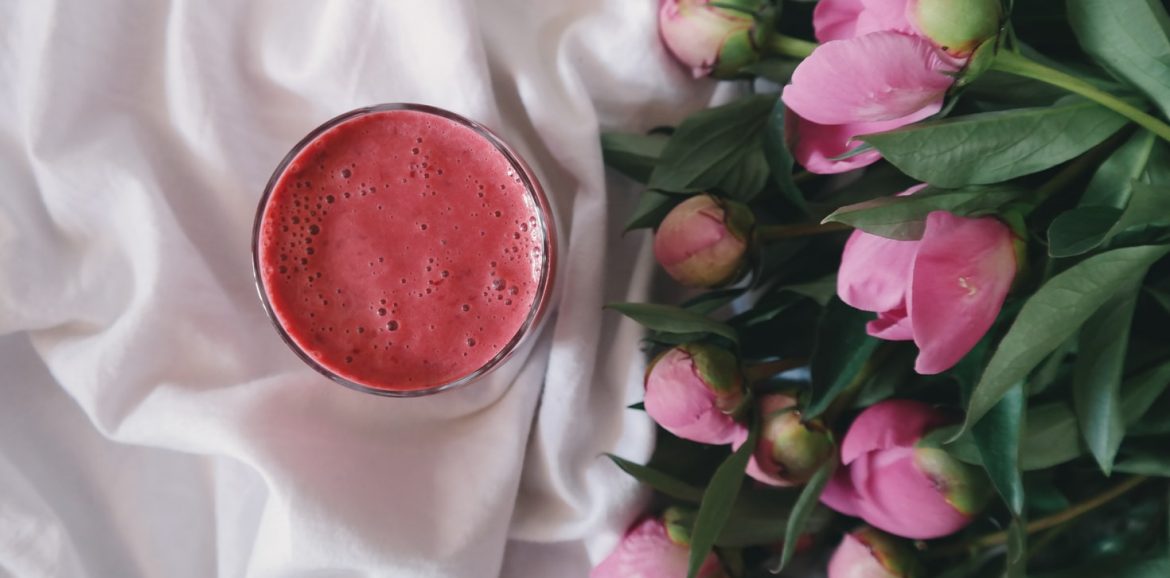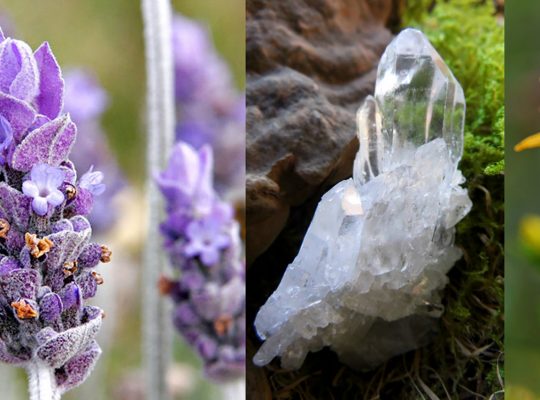If you’ve been told by your doctor that your estrogen levels are low, you can use these estrogen-rich foods to raise them naturally. You can also use this list as a way to avoid foods high in estrogen if you have too much estrogen in your body. Estrogen not only plays a critical role in regulating the reproductive cycles but is important in keeping the heart, blood vessels, bones, muscles, skin, and hair healthy. For this reason, women with low levels of estrogen due to menopause and other reasons often face adverse health effects.
Estrogen is not just one but multiple hormones with the three main ones being estrone, estradiol, and estriol. They are metabolized in different phases, and there are preferred (protective) and undesired (potentially harmful) metabolic pathways. If a women’s body prefers the undesired metabolic pathways, it can increase her risk for breast and endometrial cancers, fibroid tumors and ovarian cysts and disrupt normal menstrual cycles. Often, this is linked to estrogen dominance. Estrogen dominance in men results
in a whole other set of symptoms for a man like erection difficulty, depression, the gaining of belly fat, increased male breast tissue, or “man boobs”. Worse, recent research has suggested that too much estrogen in a man’s system puts him at higher risk for developing prostate cancer as well.
However, too low estrogen levels cause low libido leading to feelings of depression and low sex drive. They also cause menopause symptoms such as hot flashes and weight gain, breast pain, and in premenopausal women, PMS trouble, breast pain, and difficulties getting pregnant.
Dried Fruit
Dried fruit, especially dried apricots, dates, and prunes, can help balance your estrogen levels in a big way. They are also a healthy snack that can keep you away from the vending machine with a sweet and satisfying chewiness, as well as added fiber. Dried fruits contain phytoestrogens, which will mimic the way estrogen is used by the body.
When eating dried fruit, remember that the drying process concentrates all parts of the fruit, so you’ll generally get more vitamins and nutrients from them, but you’ll also get more sugar. So, a small handful, e.g. 8 dried halves of apricot or 3-4 medjool dates, are enough to make a serving.
Flaxseed
Flaxseeds are high in fiber, and will therefore help you feel full during and after a meal, and help a sluggish digestive system. They are often recommended for weight loss because of their fiber content, and can help lower cholesterol as well. Flaxseeds are a fantastic source of omega-3s, but it’s the ALA form from plants, and not the DHA/EPA as you get from salmon and other animal sources. This form of omega-3 is helpful at keeping arteries from hardening, which can help prevent strokes and heart attacks and provide other heart healthy benefits. Ground flaxseeds can be used in baking (as an egg replacer), soups, and smoothies, and they can be sprinkled on a salad or coconut yogurt. Keep refrigerated to maintain
freshness, or ground fresh right before eating them. And they are very high in lignans, a form of phytoestrogens.
Sesame Seeds
Both sesame seeds and sesame oil contain phytoestrogens (lignans). Both golden and black sesame seeds are rich in trace minerals and vitamins E and B6. Sesame seeds are loaded with fiber. Because of their small size you can easily add them to other foods such as salads, stir-fries, homemade snack bars/granola,
homemade snack balls, yogurt, soups, falafel, or cream-cheese. For example, a tablespoon of sesame seeds is going to give you nearly a tenth of what you need each day for iron, magnesium, and calcium, as well as 4% of your total fiber.
Sesame seeds stuck to the bun of a Big Mac don’t qualify.
Chickpeas
Chickpeas are a natural source of phytoestrogens.
Chickpeas are also high in fiber and protein, which makes them a great choice if you’re looking to reduce your meat consumption. They’ll help you feel full, and keep you feeling that way longer because of that combination of fiber and protein.
Tips for eating more: Hummus is perhaps the easiest way to eat more chickpeas, and is basically made from mashing up chickpeas and adding tahini and olive oil until the right consistency is achieved. Add garlic, lemon juice, cumin, coriander, salt and pepper to taste – and sesame seeds.
Beans
Beans have long been considered a healthy food thanks to their high fiber content and ability to lower cholesterol. They are also relatively high in phytoestrogen. Because of their high fiber and protein content you’ll often see beans in a meatless main dish. They have a texture to them that helps fill you up, and they are digested slowly by the body, making them a good carbohydrate choice for diabetics or anyone looking to maintain healthy blood glucose levels.
Peas
Peas contain phytoestrogens, minerals like magnesium, iron, and potassium, fiber, and even pack some protein.
Phytoestrogens
As their name suggests, phytoestrogens are natural plant hormones that your body converts into estrogen. The prefix “phyto” means plant. There are two primary types: lignans and isoflavones. Lignans are plant hormones that are similar to estrogen, found in vegetables, fruits, nuts and seeds, while isoflavones are estrogen-like hormones found in dairy, grains (especially wheat bran), and soy products. Animals that are fed soy and grains will pass on these hormones through their meat and milk. Choose foods that are high in phytoestrogens. Phytoestrogens act like an estrogen substitute in the body. Consume phytoestrogens in moderation.
legumes: soybeans, peas, pinto and lima beans
soy products: tofu, tempeh, soy milk
veggies: fennel, celery, yams, olives, potatoes, tomatoes, onions
fruits: cranberries, prunes, apricots, cherries, papaya
herbs: oregano, sage, licorice
whole grains, wheat bran, barley, oats,
seeds: flaxseed, sesame seeds
alcohol: red wine (resveratrol is a stilbene = phytoestrogen), beer (hops and barley)
Quit smoking
Smoking has negative effects on the endocrine system, limiting the body’s ability to produce estrogen effectively. Smoking in premenopausal women has been linked to menstrual dysfunction, infertility, and earlier menopause.
Athletes may experience a drop in estrogen levels. This is because women with low levels of body fat have more trouble producing estrogen (and progesterone). If you are an athlete or have low body fat levels, see your doctor for a good way to replenish your estrogen.
Coffee
Women who drink more than two cups of coffee (200 mg of caffeine) per day may have higher estrogen levels than women who don’t. While caffeine may increase estrogen levels, it does not seem to increase fertility. If you’re trying to increase estrogen in order to ovulate, coffee and caffeine may not help much.
Use organic coffee. Most coffee is a heavily sprayed crop, so drinking organic coffee should reduce your exposure to herbicides, pesticides, and fertilizers. Use unbleached filters. Many white coffee filters contain bleach that can leach out into the final product, so try to find unbleached coffee filters for a safer brew or use a French press.
Consume coffee and other caffeinated beverages in moderation. You should not consume more than 400mg of caffeine on any given day, however you should aim to consume much less than that on average.
!!! Caffeine boosts cortisol and signals stress mode to the body. If you are low in progesterone or are experiencing symptoms of ED (estrogen dominance): ditch the coffee !!!
Warning: Synthetic estrogens
Synthetic estrogens, including xenoestrogens, have a much stronger, stimulating effect and are not cleared quickly from the body. They store in fat cells and can really throw hormones out of balance, in both men and women.
Dairy and beef contain man-made estrogens that have been mixed into the feed that cows eat. It stores in their fat and muscle fibers and is passed into the milk. The FDA claims it does not permit the use of added hormones in pork or poultry (chicken, eggs, turkey), so these foods should be estrogen-free. However, when they get fed with soy products, they intake phytoestrogens. Therefore, if you are a meat eater, I recommend eating only grass-fed beef, organic free-range poultry, or game meat.
Reduce your exposure to plastics: Mostly these are Bisphenol A, or BPA, an estrogen that can get into your food from heated plastics. BPA is released into your food when you microwave frozen foods, or if your plastic water bottles become heated and you then drink the water. Don’t use plastic food wraps over hot foods – rather use wax paper or a glass container. Keep water bottles in a cool, dry, dark place, or filter your own with reverse osmosis filters.
Atrazine and dieldrin are estrogen-like herbicides that can be present in non-organic produce.
Triclosan, another synthetic estrogen, is present in antibacterial soaps. Triclosan disrupts hormones.
Febreze, contains cancerogenic chemicals and xenoestrogens.







